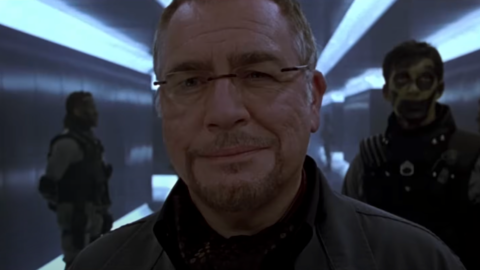Masters of the Universe: Revolution premieres Thursday, January 25 on Netflix.
When Mattel and Netflix charged Kevin Smith with rebooting He-Man and the Masters of the Universe, it wasn’t to modernize the franchise completely. Instead, 2021’s Masters of the Universe: Revelation was intended as a continuation of He-Man’s original, syndicated adventures in the 1980s, aimed at adult fans who’d grown up watching the animated series. Those adult fans then review-bombed Revelation for the bold choice of seemingly killing off its main character (voiced by Chris Wood) in the first episode.
Though Revelation restored the planet of Eternia to its natural order in the end, it left fans feeling scorned and Smith feeling hurt by the response – making his return for Masters of the Universe: Revolution a surprise. The confusingly named follow-up feels like an attempt to rectify some of the complaints fans had about the previous reboot by supplying a pulpy, vibrant He-Man-versus-Skeletor story. In this iteration, the iconic villain is given a technological upgrade and a refocused aim on ruling Eternia, something He-Man himself is struggling to grapple with. While not overly complex, Revolution gets the band back together to tackle a threat, and that is enough.
In terms of its animation, Revolution basks in familiarity. The visual style’s natural progression from the hand-drawn work of original He-Man studio Filmation slots in well with other shows that have tried to recapture a similar look. Characters and backgrounds are cleanly rendered with popping colors that provide a sensory banquet. CGI is used to enhance scenes that lean heavily into high fantasy and sci-fi elements, depicting He-Man’s power-up sequence, the use of magic, and the deployment of nanobots with equal splendor.
The most impressive aspect of the animation is the restraint shown to not make everything look too smooth. Much of the traits of ’80s TV animation were born from animators finding ways around budget and time limits, resulting in characters sometimes moving in charmingly janky ways and snapping between poses. Retaining that charm in a modern style is a big achievement of Revolution.
Less consistently stellar is the action. That’s not to say there aren’t moments that will have you clenching your fists and punching the air, but they’re balanced out by sections that move glacially, not quite communicating the urgency of the situation or the impact of every punch, zap, and boom. Some of the imagery is outrageous, especially as characters power up incrementally across five episodes. This leads to awe-inspiring visuals in some cases and messier mosaics in others. Still, Revolution is able to maintain its cool factor, which is very much entrenched in what a kid from the ’80s would find cool. The imagery of characters being gifted a new form of magic from ancient beings, altering their costumes, or He-Man getting upgrades to his sword is over the top and nonsensical, but in a way that fits within the MOTU spirit. Much like the action sequences, some of it really works, while the rest is overly familiar.
This extends to the writing, which is dense with cheesy quips and heavy-handed exposition. There’s an appeal to He-Man’s clunky one-liners, but they could also make you want to step away from Netflix for a while. But the writers’ reverence for the source material also imbues Revolution with heart. It doesn’t treat its characters like fighting machines whose feelings don’t matter, and the main cast’s motivation is rooted in genuine emotion. The landing is stuck for some characters better than others, but it’s enough to keep the show from feeling like a heartless retread.
The main force working against Revolution is today’s TV landscape of shortened episode orders and all-at-once releases. Five 30-minute episodes are tasked with re-creating the feeling of an 80s cartoon with no mind given to the structure that the original Masters of the Universe show thrived in: 130 episodes aired over two years. Revolution works as a comforting embrace of the familiar, but isn’t given the time to fully wrap the viewer in that warmth. Even doubling the episode count would go a long way toward manifesting the spirit of those long-ago after-school broadcasts.







